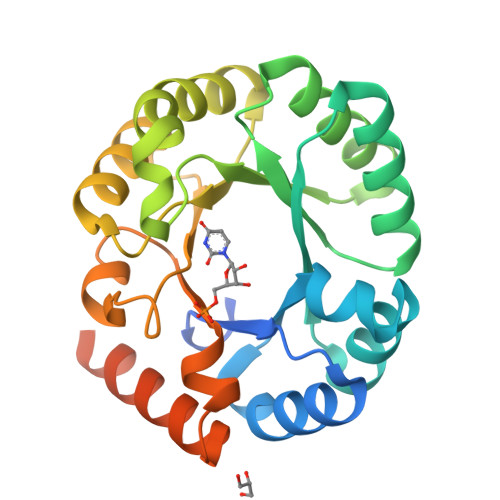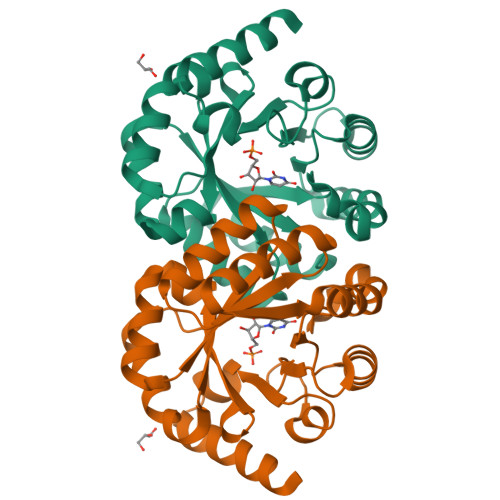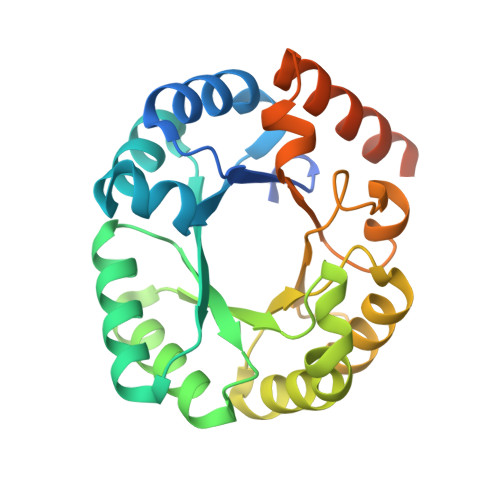Atomic resolution structure of the orotidine 5'-monophosphate decarboxylase product complex combined with surface plasmon resonance analysis: implications for the catalytic mechanism.
Fujihashi, M., Mito, K., Pai, E.F., Miki, K.(2013) J Biological Chem 288: 9011-9016
- PubMed: 23395822
- DOI: https://doi.org/10.1074/jbc.M112.427252
- Primary Citation of Related Structures:
3W07 - PubMed Abstract:
Orotidine 5'-monophosphate decarboxylase (ODCase) accelerates the decarboxylation of its substrate by 17 orders of magnitude. One argument brought forward against steric/electrostatic repulsion causing substrate distortion at the carboxylate substituent as part of the catalysis has been the weak binding affinity of the decarboxylated product (UMP). The crystal structure of the UMP complex of ODCase at atomic resolution (1.03 Å) shows steric competition between the product UMP and the side chain of a catalytic lysine residue. Surface plasmon resonance analysis indicates that UMP binds 5 orders of magnitude more tightly to a mutant in which the interfering side chain has been removed than to wild-type ODCase. These results explain the low affinity of UMP and counter a seemingly very strong argument against a contribution of substrate distortion to the catalytic reaction mechanism of ODCase.
Organizational Affiliation:
Department of Chemistry, Graduate School of Science, Kyoto University, Sakyo-ku, Kyoto 606-8502, Japan.


















